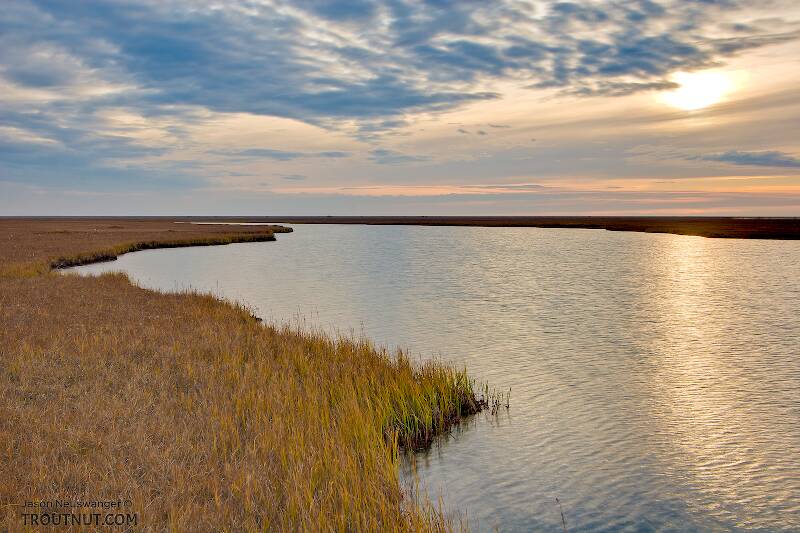
Blue-winged Olives
Baetis
Tiny Baetis mayflies are perhaps the most commonly encountered and imitated by anglers on all American trout streams due to their great abundance, widespread distribution, and trout-friendly emergence habits.
Featured on the forum

This specimen resembled several others of around the same size and perhaps the same species, which were pretty common in my February sample from the upper Yakima. Unfortunately, I misplaced the specimen before I could get it under a microscope for a definitive ID.

Troutnut is a project started in 2003 by salmonid ecologist Jason "Troutnut" Neuswanger to help anglers and
fly tyers unabashedly embrace the entomological side of the sport. Learn more about Troutnut or
support the project for an enhanced experience here.
Crepuscular on Mar 15, 2013March 15th, 2013, 3:59 pm EDT
Well what started as a mini experiment to measure E. subvaria nymphs prior to hatching from a local creek where they usually start the first or second week of April. This is what I found. All were collected from three rocks within 1 ft of each other.Sorry the photos are crappy I did not have my usual set up. I was not expecting to take photos.

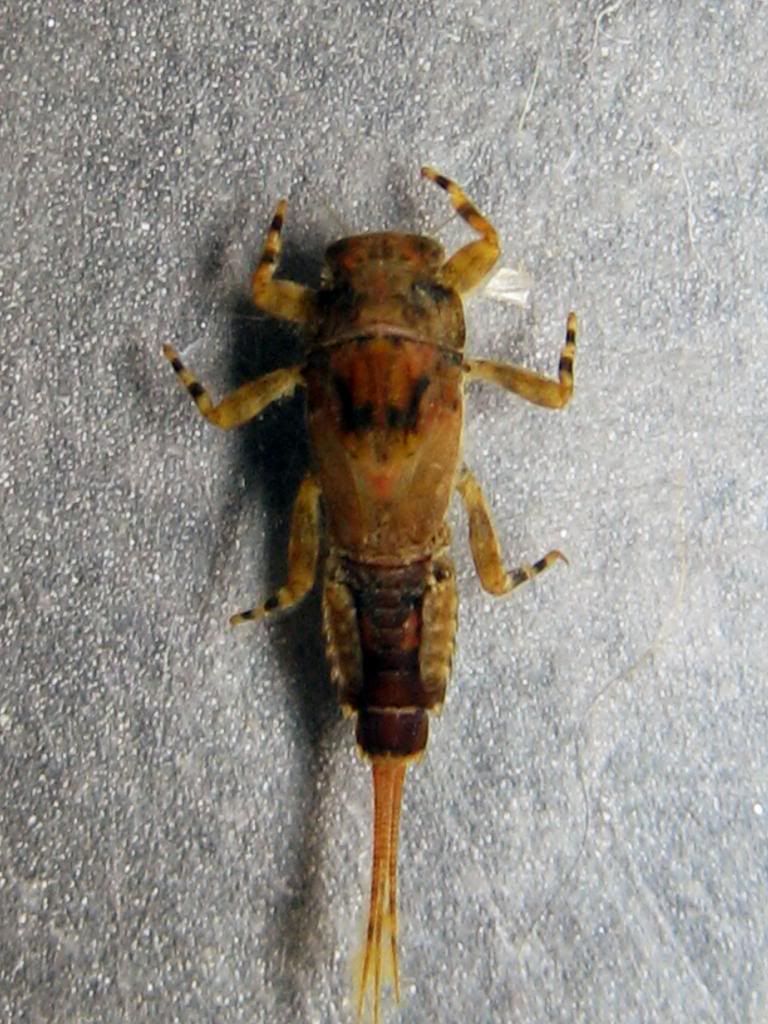
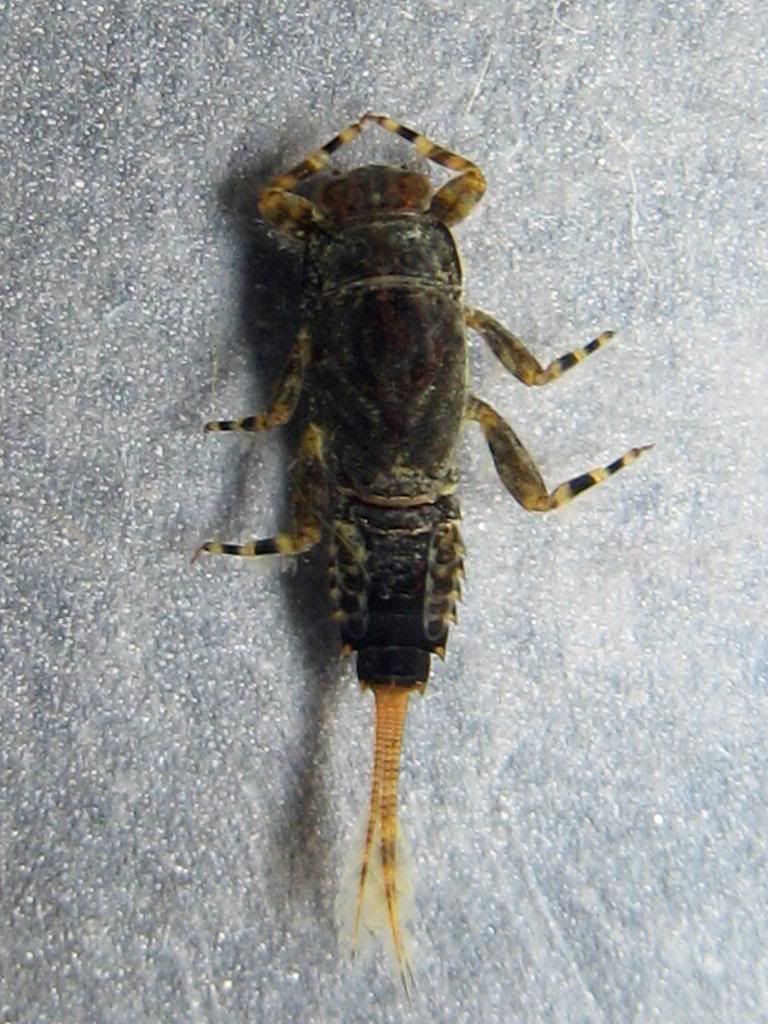
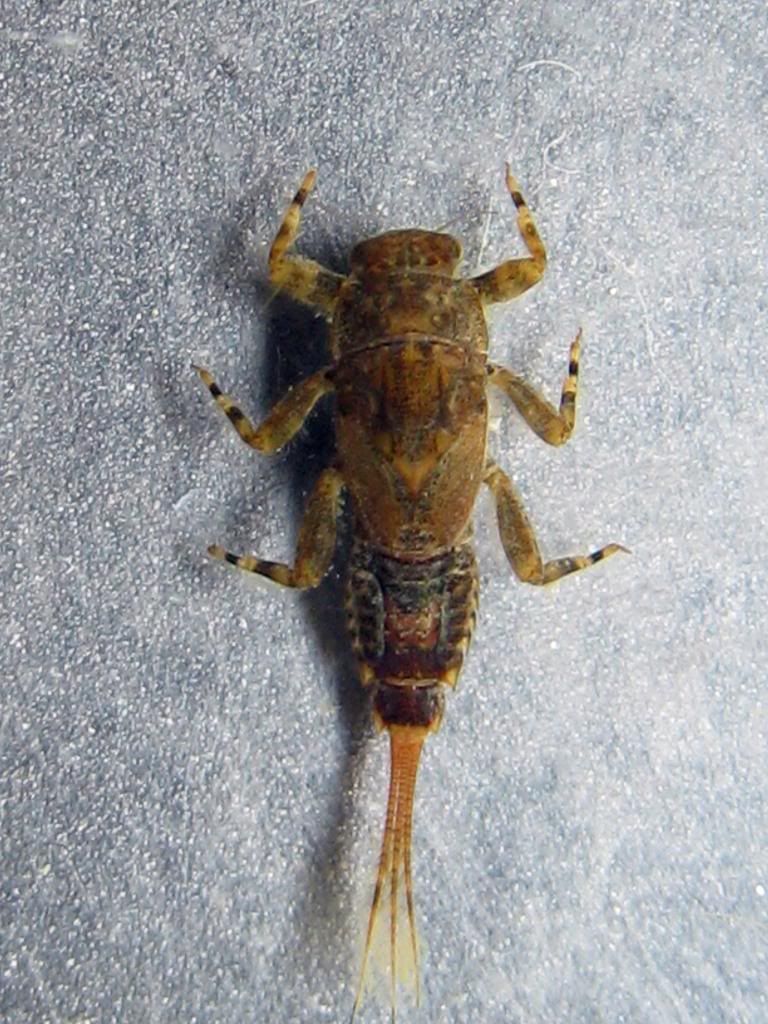

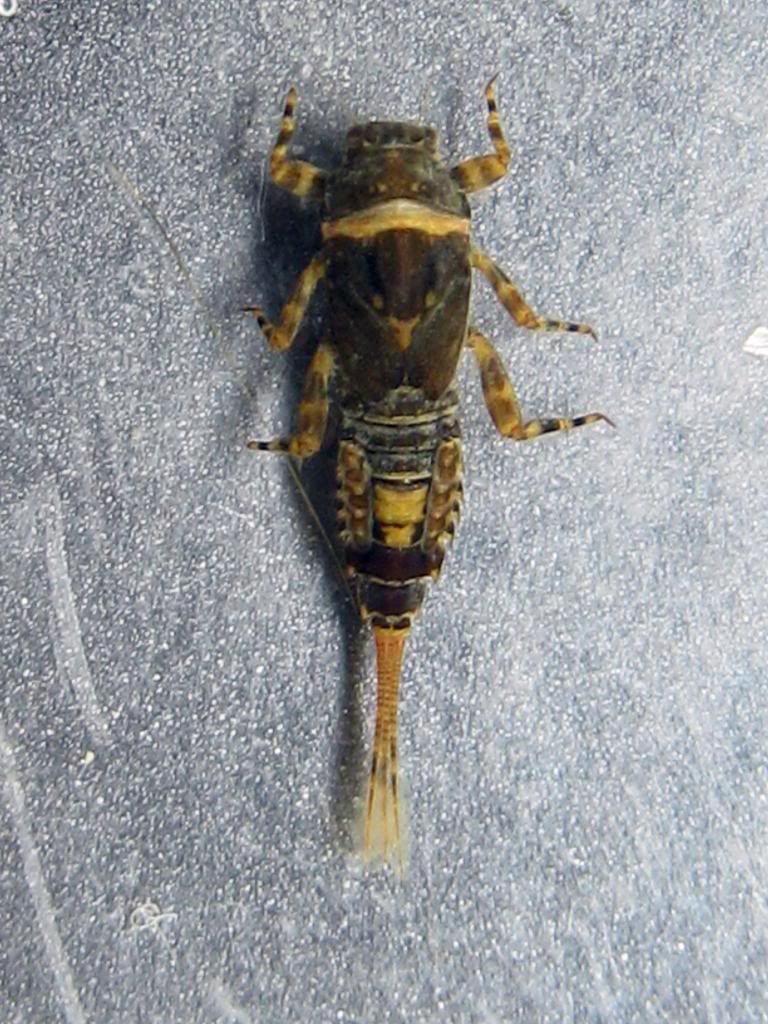
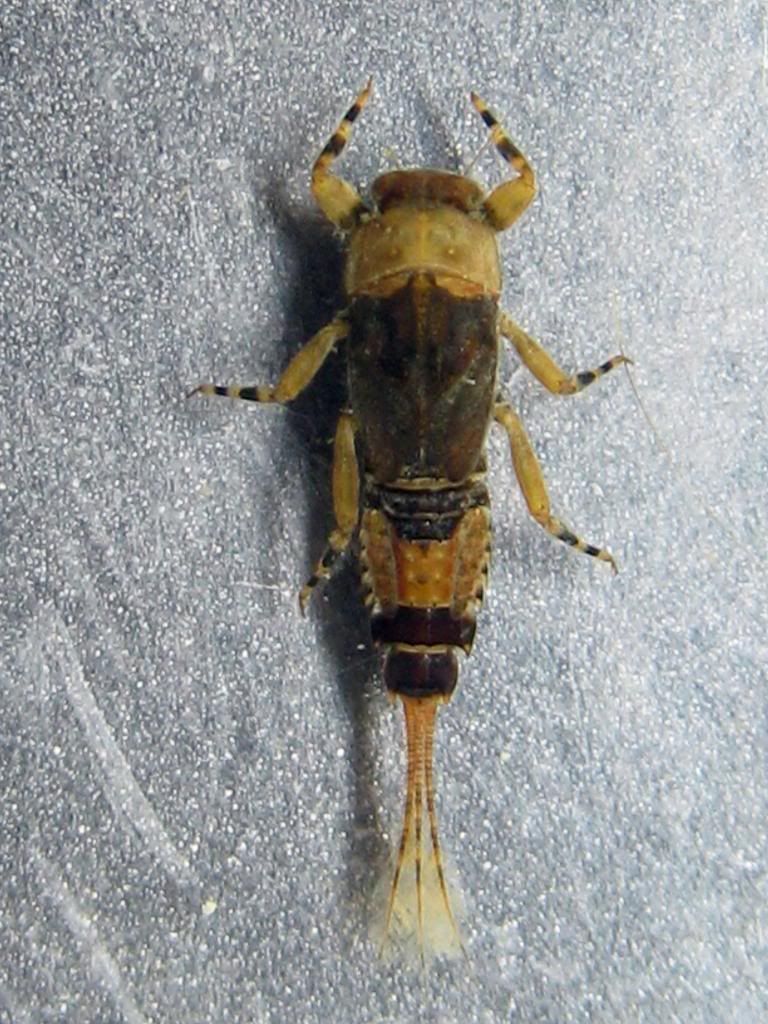
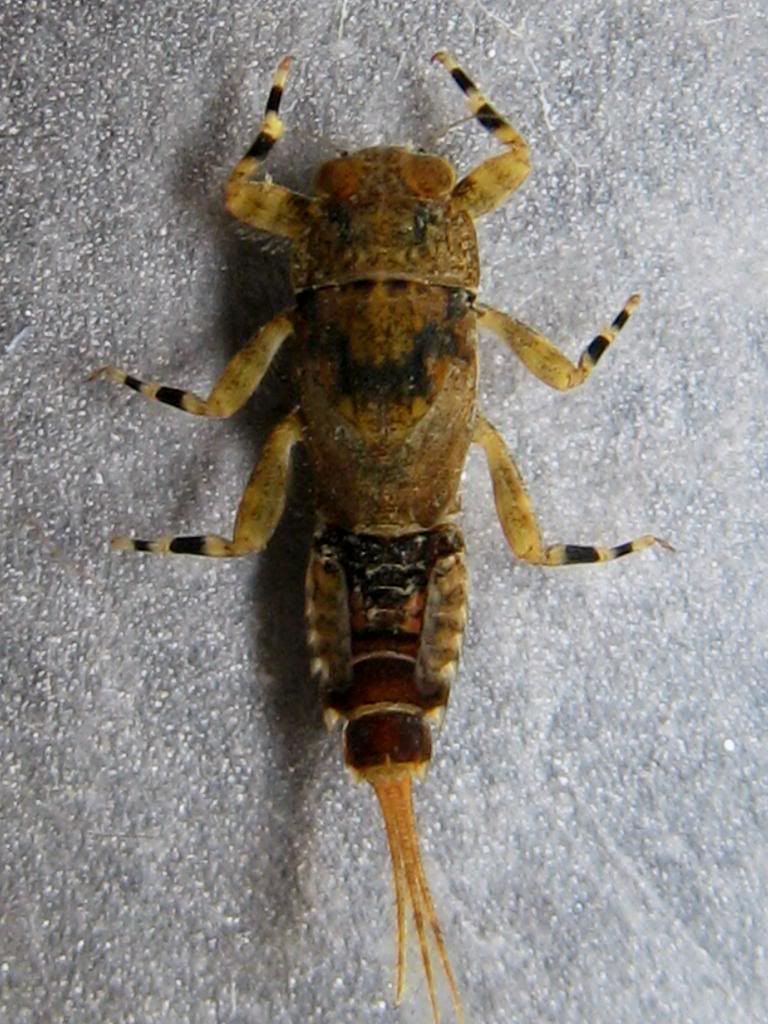
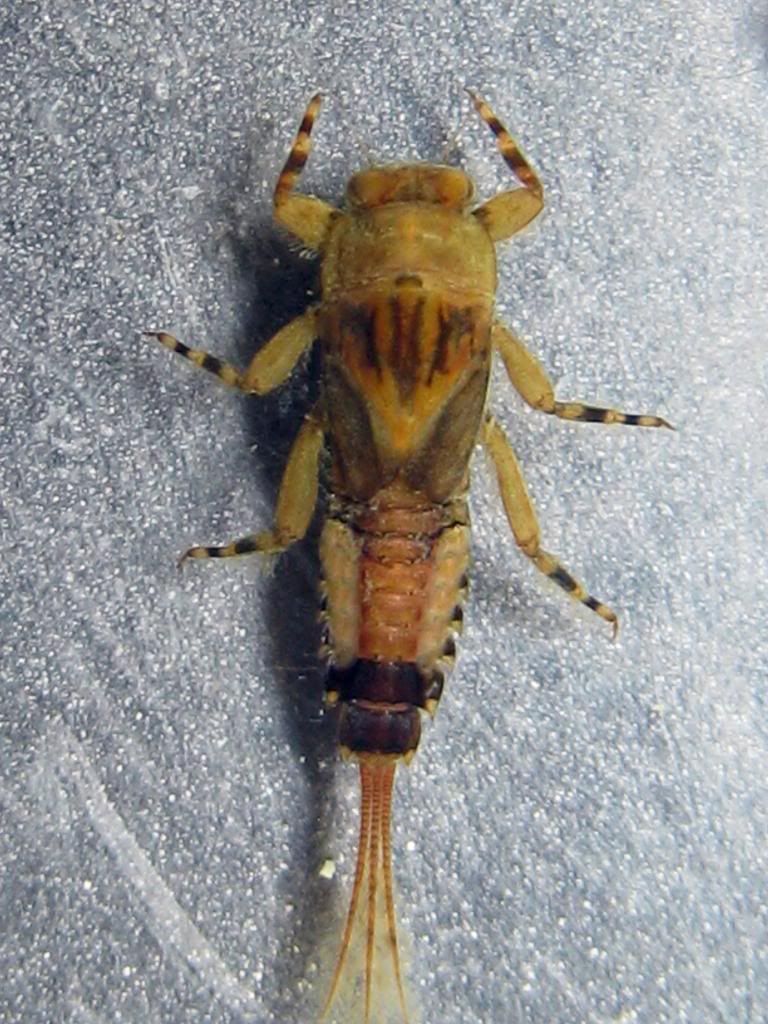









Entoman on Mar 15, 2013March 15th, 2013, 4:28 pm EDT
Tremendous run of photos!
I think they illustrate the point of intraspecific variability better than I remember seeing anywhere else. They also illustrate the point of how looking for meaning in the differences between them outside of those characters listed in the keys can often lead us astray from an ID perspective.
Sure shows why the heather mix of nat. hare's ear dubbing is the best material to imitate the broad spectrum of these nymphs, huh?
I think they illustrate the point of intraspecific variability better than I remember seeing anywhere else. They also illustrate the point of how looking for meaning in the differences between them outside of those characters listed in the keys can often lead us astray from an ID perspective.
Sure shows why the heather mix of nat. hare's ear dubbing is the best material to imitate the broad spectrum of these nymphs, huh?
"It's not that I find fishing so important, it's just that I find all other endeavors of Man equally unimportant... And not nearly as much fun!" Robert Traver, Anatomy of a Fisherman
Crepuscular on Mar 15, 2013March 15th, 2013, 4:42 pm EDT
Well thanks but the photos are not great but man was I surprised when I saw what I picked off of those rocks.
Yes it certainly does, and that brings up another aspect of nymphing that I should have mentioned in that other thread. I believe most fly fishers nymph in faster water where the fish do not have the time to inspect a fly like they do a dry fly fished in slower water.
Sure shows why the heather mix of nat. hare's ear dubbing is the best material to imitate the broad spectrum of these nymphs, huh?
Yes it certainly does, and that brings up another aspect of nymphing that I should have mentioned in that other thread. I believe most fly fishers nymph in faster water where the fish do not have the time to inspect a fly like they do a dry fly fished in slower water.
Martinlf on Mar 15, 2013March 15th, 2013, 5:22 pm EDT
Very interesting. Thanks for posting these, Eric. Today I happened to be looking at Knopp and Cormier's old distinction between rotunda and invaria; one supposed distinguishing characteristic between these two (that are now considered one) was the number of bands on the legs. I note this varies in Eric's subvaria photos, suggesting why such features may not be very reliable markers.
Are Eric's superb photos getting cross listed or reposted into Jason's "Encyclopedia of Aquatic Insects" so they easily can be located later? If not, I'd recommend that Kurt, or Jason, or somebody capable of getting the photos established there, do so.
Kurt?
Are Eric's superb photos getting cross listed or reposted into Jason's "Encyclopedia of Aquatic Insects" so they easily can be located later? If not, I'd recommend that Kurt, or Jason, or somebody capable of getting the photos established there, do so.
Kurt?
"He spread them a yard and a half. 'And every one that got away is this big.'"
--Fred Chappell
--Fred Chappell
Entoman on Mar 15, 2013March 15th, 2013, 5:59 pm EDT
A few of those nymphs may be invaria, Louis. I didn't look that closely at them but I'm assuming Eric did? Regardless, the point on variability is still well made by them. You're right about maculation, though. For example, out West we used to look at maculation to tell d.infrequens from excrucians, which has since proved to be entirely unreliable. It's all morphological now, requiring a close look at their feet!:)
Yes, I plead guilty. I should spend less time posting on the forum and more working in the Encyclopedia. After last Fall's revision of the caddis (moving all the Ceratopsyche back to Hydropsyche among other jobs), I haven't done much. That pain in the butt made me a little burned out, and it's not nearly as much fun as our conversations here.:) I promise to get on it soon.
Are Eric's superb photos getting cross listed or reposted into Jason's "Encyclopedia of Aquatic Insects" so they easily can be located later? If not, I'd recommend that Kurt, or Jason, or somebody capable of getting the photos established there, do so.
Yes, I plead guilty. I should spend less time posting on the forum and more working in the Encyclopedia. After last Fall's revision of the caddis (moving all the Ceratopsyche back to Hydropsyche among other jobs), I haven't done much. That pain in the butt made me a little burned out, and it's not nearly as much fun as our conversations here.:) I promise to get on it soon.
"It's not that I find fishing so important, it's just that I find all other endeavors of Man equally unimportant... And not nearly as much fun!" Robert Traver, Anatomy of a Fisherman
Crepuscular on Mar 15, 2013March 15th, 2013, 6:41 pm EDT
I have not looked at them closely I wanted to get some photos of them before the colors fade, so right after i put them in ethanol i took the pics. I'll look at them when I get a chance. If any of them are invaria, they are giants.
Entoman on Mar 15, 2013March 15th, 2013, 7:14 pm EDT
The rotunda form of invaria is larger than subvaria. Since the synonymy, size isn't much help anymore. To further complicate matters the old rotunda form has better developed dorsal tubercles than the invaria form. Based on what I can see of them after a little closer gander, most look to be subvaria but there are a few that may be questionable I suppose.
"It's not that I find fishing so important, it's just that I find all other endeavors of Man equally unimportant... And not nearly as much fun!" Robert Traver, Anatomy of a Fisherman
Lastchance on Mar 15, 2013March 15th, 2013, 7:21 pm EDT
Great photos, Eric. Without looking it up I guess those come from the same family as the sulfur nymphs? They sure look very similar.
Bruce
Bruce
Martinlf on Mar 16, 2013March 16th, 2013, 8:41 am EDT
Eric's photos are of Hendrickson nymphs. Both they and invaria are Ephemerellidae, if you're talking about the sulphur that is most often seen in on the Little J or Spring Creek May. (I think the rotunda distinction has been dropped, hasn't it?) But there are a number of other flies that are called sulphurs from other families.
"He spread them a yard and a half. 'And every one that got away is this big.'"
--Fred Chappell
--Fred Chappell
Jmd123 on Mar 16, 2013March 16th, 2013, 9:38 am EDT
Whaddya mean, "...the photos are crappy." ??? Those are beautiful! And what a wonderful display of variation in a single species! Or two, or species complex? I'll let the lumpers and splitters decide on that one...but it does raise the idea of variation in nymph tying, abdomens with bright spots (#1, 4, 5, 6 above)? At least on top, what did they look like underneath?
Jonathon
Jonathon
No matter how big the one you just caught is, there's always a bigger one out there somewhere...
Oldredbarn on Mar 16, 2013March 16th, 2013, 10:30 am EDT
what did they look like underneath?
Tan...:)
"Even when my best efforts fail it's a satisfying challenge, and that, after all, is the essence of fly fishing." -Chauncy Lively
"Envy not the man who lives beside the river, but the man the river flows through." Joseph T Heywood
"Envy not the man who lives beside the river, but the man the river flows through." Joseph T Heywood
Crepuscular on Mar 16, 2013March 16th, 2013, 11:54 am EDT
Yeah. tannish olivish brownish
Entoman on Mar 16, 2013March 16th, 2013, 2:57 pm EDT
Yeah. tannish olivish brownish
In other words "variable." Hence, the title of Eric's topic.:)
How 'bout a fancy handle like "Spectrumized earth-tone pastel"? Covers all the bases! LOL
"It's not that I find fishing so important, it's just that I find all other endeavors of Man equally unimportant... And not nearly as much fun!" Robert Traver, Anatomy of a Fisherman
Oldredbarn on Mar 17, 2013March 17th, 2013, 9:11 am EDT
How 'bout a fancy handle like "Spectrumized earth-tone pastel"? Covers all the bases! LOL
:) Kurt...Step away from the bourbon on the rocks before hitting "Submit Reply"...;)
"Even when my best efforts fail it's a satisfying challenge, and that, after all, is the essence of fly fishing." -Chauncy Lively
"Envy not the man who lives beside the river, but the man the river flows through." Joseph T Heywood
"Envy not the man who lives beside the river, but the man the river flows through." Joseph T Heywood
Jmd123 on Mar 17, 2013March 17th, 2013, 12:08 pm EDT
I'm sure Ernie Schweibert could have come up with an appropriate description..."varyng from a light yellowish buff-tan through medium shades of grayish olive and sage to moderately strong browns with dark yellowish overtones"...
Or get out your Munsell color book? "That's a 5 Y 4/3"...
Jonathon
Or get out your Munsell color book? "That's a 5 Y 4/3"...
Jonathon
No matter how big the one you just caught is, there's always a bigger one out there somewhere...
Entoman on Mar 17, 2013March 17th, 2013, 1:53 pm EDT
:) Kurt...Step away from the bourbon on the rocks before hitting "Submit Reply"...;)
Hey, I resemble that remark!:)
I'm sure Ernie Schwiebert could have come up with an appropriate description.
Yeah, his art history color definitions combined with architect's construction terms for body parts can certainly be mind boggling at times. When he uses phrases like "at its cornices" and "unusual shade of Cyprus ochre with alabaster stencilings", my eyes glaze over.
"It's not that I find fishing so important, it's just that I find all other endeavors of Man equally unimportant... And not nearly as much fun!" Robert Traver, Anatomy of a Fisherman
Oldredbarn on Mar 17, 2013March 17th, 2013, 3:58 pm EDT
Or get out your Munsell color book? "That's a 5 Y 4/3"...
Hues, value, and chroma...Ha! Jonathon...That has to be the funniest thing you have ever said here and I mean that! IALMAO!
Do we think Borger's Color system was a "rip-off" here...I mean borrowed...;)
Spence
Kurt...Ernie no-doubt takes the cake, but good old Vincent Marinaro gets a close 2nd...Read Chapter 3 of "A Modern Dry-Fly Code"...(Fly Dressing Theory)...This is where he introduces us to the trout's window and the degrees when and how light penetrates the water surface and reaches the trout...He talks about the "mirror" and how different insects leave different impressions on it etc...""The feet of a floating dun, pressing upon the upper side of the mirror, create small meniscuses or lenses which rise about the feet and encircle them to form light condensers arranged in a definite pattern" Or, later in the chapter his discussion of "translucency" and what almost sounds like the ultimate limitation in fly tying since it hardly can be duplicated...He mentions here Dunne and his experiment with painting the shanks of hooks etc...An attempt to reproduce this translucency...Talk about glassing over...:)
I alway marvel at the human ego (for lack of a better word)...These writers latched on to a theory and argued it as if the trout had whispered it in their ear and no one elses...Vinnie likes telling us where the others failed to get it right...Go to Swisher's site and you would think that he and Carl are the creators of everything of import since "Selective Trout"...
...and one more thing...:) There is little reason for the bottom of most may fly nymphs to have any color...They are "clinging" to the substrate and don't want to be seen from above. The backs of Eric's nymphs are variable because the stream bottom is usually variable...I could drop these bugs in to my beloved Au Sable and as soon as they made it to the stones on the bottom they would all but disappear.
"Even when my best efforts fail it's a satisfying challenge, and that, after all, is the essence of fly fishing." -Chauncy Lively
"Envy not the man who lives beside the river, but the man the river flows through." Joseph T Heywood
"Envy not the man who lives beside the river, but the man the river flows through." Joseph T Heywood
Sayfu
Posts: 560
Posts: 560
Sayfu on Mar 17, 2013March 17th, 2013, 4:05 pm EDT
So where does my defining color schit brindle fit in?
Entoman on Mar 17, 2013March 17th, 2013, 7:26 pm EDT
So where does my defining color schit brindle fit in?
Perfectly in the middle...:)
"It's not that I find fishing so important, it's just that I find all other endeavors of Man equally unimportant... And not nearly as much fun!" Robert Traver, Anatomy of a Fisherman
Feathers5
Posts: 287
Posts: 287
Feathers5 on Mar 18, 2013March 18th, 2013, 5:11 am EDT
So where does my defining color schit brindle fit in?
Ordinarily, I would have jumped on this post, but it's too easy!
Bruce
Quick Reply
Related Discussions
Topic
Replies
Last Reply
10
Dec 18, 2013
by Brookyman
by Brookyman
10
Aug 10, 2007
by JAD
by JAD

